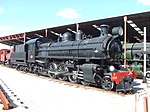Ron Courtney Island
Ron Courtney Island is a small uninhabited manmade river island in the Swan River, located in the suburb of Ascot in Perth, Western Australia. It was named in honour of the first chairman of the Swan River Conservation Board, which was formed in 1959.The island was formed in 1969 after a channel was cut through Garvey Park in an effort to alleviate the erosion caused by the flow of the Swan River. It has a stand of flooded gum and a fringing community of shorerush and lake club rush. The understorey is predominantly exotic grass species which gives the island a parkland character. It is one of only four islands in the lower Swan River, the others being Kuljak Island, Heirisson Island and the island in Elizabeth Quay.
Excerpt from the Wikipedia article Ron Courtney Island (License: CC BY-SA 3.0, Authors).Ron Courtney Island
Ashfield Flats River Track, Town Of Bassendean
Geographical coordinates (GPS) Address Nearby Places Show on map
Geographical coordinates (GPS)
| Latitude | Longitude |
|---|---|
| N -31.921162 ° | E 115.941251 ° |
Address
Unnamed WA36440 Management Area
Ashfield Flats River Track
6984 Town Of Bassendean, Bassendean
Western Australia, Australia
Open on Google Maps







